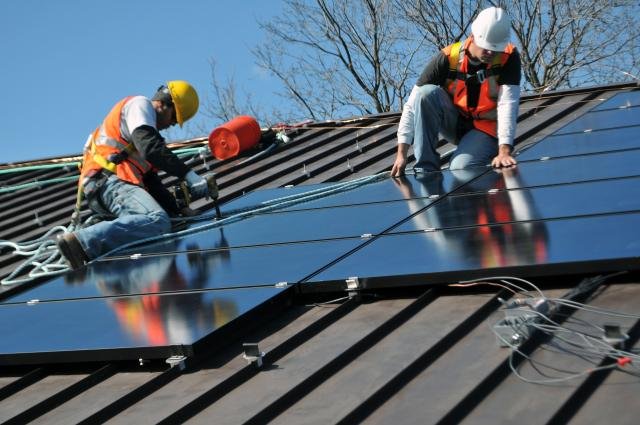
In the same week that it approved the huge $1.2 billion Shenhua Watermark coalmine in prime agricultural land on the Liverpool Plains, the Abbott government has directed the Clean Energy Finance Corporation (CEFC) to end all investment in wind farms and small-scale solar projects. These are just the latest salvos in a series of attacks on the renewable energy sector that seek to protect their friends in the coal industry.
Set up by Julia Gillard’s Labor government as part of its deal with the Greens, the CEFC exists to provide commercial loans for renewable energy, energy efficiency and “low emissions” projects that would otherwise struggle to get finance. Half its portfolio is renewable energy projects, mostly wind and solar photovoltaic. It is required to return a profit to the government from its loans.
In an interview with the ABC in 2013, CEFC chair Jillian Broadbent explained the role of the CEFC in providing assurance to commercial lenders to participate in clean energy investments.
“I think the financial sector’s experience with clean energy isn’t sufficiently practised for them to have a great appetite to participate,” she said. “So we tend to be the catalyst to bring them to the table, and either by persuasion or arm twisting, get them to progress these activities.”
The CEFC is a statutory body, which the Abbott government tried to abolish but was blocked in the Senate. While government may give some direction to the body under its rules, it is unclear whether the most recent directive is legal or not. The CEFC has indicated it is seeking legal advice about this latest directive, which may breach the law under which the CEFC was established.
Section 65 of the Clean Energy Finance Corporation Act 2012 provides an explicit limitation on the directions that the government may give the corporation about how it should invest.
What will be affected after the Renewable Energy Target (RET) has just been cut?
Renewable industry veteran Lane Crockett said: “The reduced RET will only be successful for small players if the larger utilities enter into long-term purchase agreements, thereby underpinning the financing to build the projects. If the larger utilities don't play ball then, without the CEFC, the power remains concentrated in a handful of large utilities.”
Many wind farms may still proceed as they are still supported under the — much reduced — RET. It is now cheaper to build a new wind farm than a new coal power station. But, small solar schemes, such those that lease rooftop solar panels at no upfront cost to low-income homes, will be one of the main victims.
Federal environment minister Greg Hunt has suggested that the CEFC should be directed away from established technology, such as wind farms, to newer and even quite unproven technology, including wave power generators.
But the organisation was set up to provide financial support to mature renewable technology. In fact, another federal body set up under the previous Labor government, the Australian Renewable Energy Agency (ARENA), is supposed to support new developing technologies become commercially viable.
Repower Port Augusta is a community campaign to have Port Augusta's two coal power stations replaced with cutting-edge solar thermal technology, that can store the sun's heat and generate power after sunset. They are hopeful that the restriction of the CEFC to large solar projects may aid their cause.
However, solar thermal technology is still relatively expensive as it is relatively new and little experience yet exists in building and operating it — at least in Australia. This means it will struggle to meet the CEFC's requirements for paying off its loans, unless other government policies are in place to support it. But ARENA, the most likely support body, has had funding cut dramatically by the Abbott government. These are some of the questions around the consequences and intentions of the government's latest intervention into the CEFC.
The hypocrisy of directing clean energy bodies away from viable projects is readily apparent when you look at two competing proposals for new energy generation in north Queensland. Wind farm developer WindLab has a proposal for a half-wind, half-solar 1200 megawatt facility to be built inland from Townsville. But will it be able to compete with Prime Minister Tony Abbott's preferred option, a new coal power station? The Windlab proposal is not uncompetitive on price, but the coal power station is likely to be subsidised by Abbott's North Australia Development Fund.
Like the article? Subscribe to Green Left now! You can also like us on Facebook and follow us on Twitter.